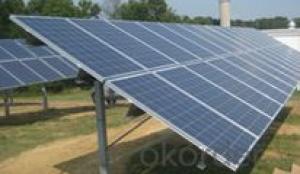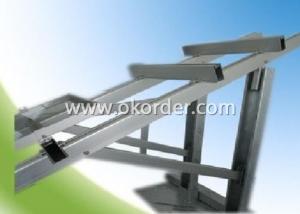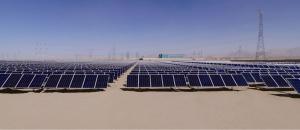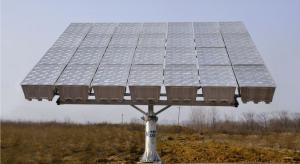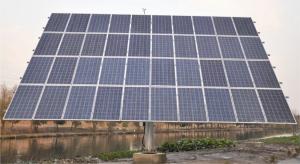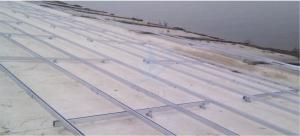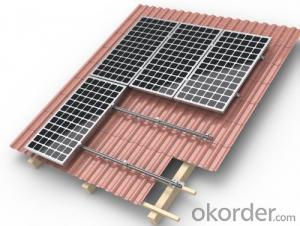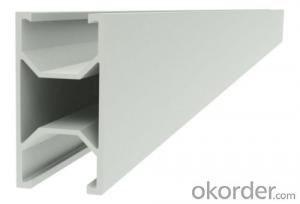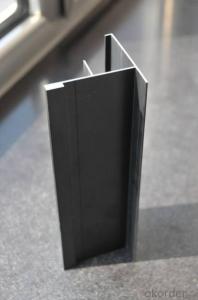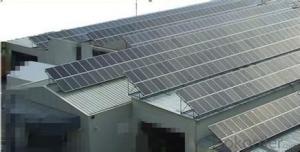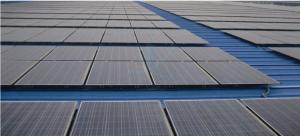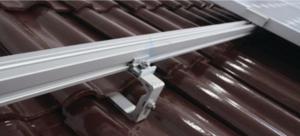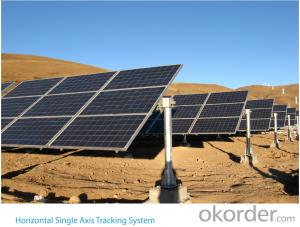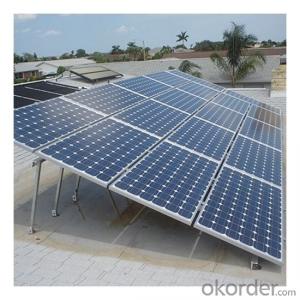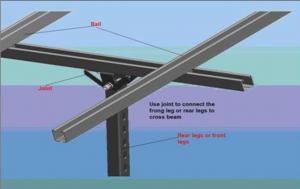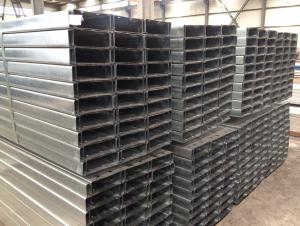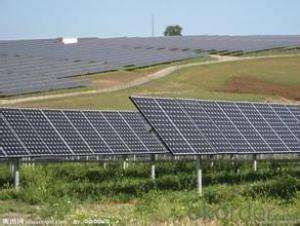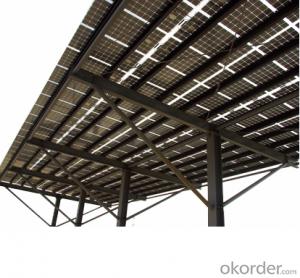Concrete Tile Roof Solar Mounting System - Pile Ground & Pile Driving Mounting System
OKorder Service Pledge
OKorder Financial Service
You Might Also Like
Pile Ground Mounting System is application for the large commercial and utility scale PV system on a non-sandy ground. It is suitable for the framed or frameless module installation.
In our Pile Ground Mounting System, C Post can be pile into the ground 1~2meters by Pile Machine quickly, then you can mount the pre-assembly Al-Beam structure, the B-Rail and the clamp easily.
Our mission is to simplify your installation and ensure the structure safety.
Technical Information:
Installation Site: Open field
Wind Load: Up to 60m/s
Snow Load: 1.4KN/m
Applicable Module: Framed or Frameless
Module Orientation: Portrait
Rail Material: Anodized aluminum
Post Material: Hot-dip galvanized steel
Adjustability: Post height deviation: 10mm
Post angle deviation: 2
Post verticality deviation: 2
Pile driving depth: 1000-2000mm
Soil Condition: Non-sandy
Benefits:
Easy Installation
Parts have been high pre-assembly on
factory to save your installation time
Safety and Reliability:
Check and test the structure strictly to
against the extreme weather condition
Flexibility and Adjustable:
Smart design reduce the difficulty of the
installation on the most condition
10-Year Warranty
Grace Solar provides a 10-years
warranty for the material and structure
- Q: Can solar mounting systems be installed on rooftops with bird deterrents?
- Yes, solar mounting systems can be installed on rooftops with bird deterrents. Bird deterrents, such as spikes, nets, or wires, are often installed on rooftops to discourage birds from nesting or perching. These deterrents can coexist with solar mounting systems without causing any significant issues. However, it's important to ensure that the bird deterrents are properly installed and do not interfere with the structural integrity or functionality of the solar panels.
- Q: Can solar mounting systems be installed on rooftops with lightning protection systems?
- Yes, solar mounting systems can be installed on rooftops with lightning protection systems. In fact, it is recommended to incorporate both systems together to ensure the safety of the solar panels and the building. The lightning protection system can help divert the lightning strike away from the solar panels, reducing the risk of damage and enhancing overall safety.
- Q: Can a solar mounting system be installed on a religious or worship center?
- Yes, a solar mounting system can be installed on a religious or worship center.
- Q: Can solar mounting systems be installed on rooftops with skylights?
- Yes, solar mounting systems can be installed on rooftops with skylights. However, it is important to consider the positioning and layout of skylights to ensure they do not obstruct the solar panel installation or reduce its efficiency. Professional consultation and careful planning are recommended to determine the optimal placement of both skylights and solar panels on rooftops.
- Q: Can solar mounting systems be installed on rooftops with HVAC units?
- Yes, solar mounting systems can be installed on rooftops with HVAC units. However, careful consideration and proper planning are necessary to ensure that the installation does not obstruct or interfere with the functioning of the HVAC units.
- Q: Can a solar mounting system be used with solar-powered colonies on other planets?
- Yes, a solar mounting system can be used with solar-powered colonies on other planets. Solar mounting systems are designed to securely hold solar panels in place, allowing them to capture sunlight and convert it into electricity. As long as the solar panels can be deployed and positioned effectively on the surface of other planets, a solar mounting system can be utilized to enhance the efficiency and stability of the solar power generation for these colonies.
- Q: Can a solar mounting system be installed on the ground?
- Yes, a solar mounting system can be installed on the ground. Ground-mounted solar systems are commonly used in areas where rooftop space is limited or not suitable for solar panel installation. These systems are designed to securely hold the solar panels at an optimal tilt angle to maximize energy production.
- Q: Can a solar mounting system be used on tile roofs?
- Yes, a solar mounting system can be used on tile roofs. There are specific mounting systems designed for tile roofs that ensure secure installation and protection of the roof. These systems typically involve brackets and flashing that are specifically designed to fit and integrate with tile roofs, allowing for the safe and efficient installation of solar panels.
- Q: Can a solar mounting system be installed on a rooftop with a modified bitumen roof?
- Yes, a solar mounting system can be installed on a rooftop with a modified bitumen roof. The mounting system typically includes specialized attachment points that can be securely fastened to the roof without compromising its integrity. It is important to ensure that the installation is carried out by professionals who have experience working with modified bitumen roofs to minimize any potential damage or leaks.
- Q: Can solar mounting systems be installed on buildings with limited roof orientation options?
- Yes, solar mounting systems can be installed on buildings with limited roof orientation options. While optimal roof orientation is generally south-facing to maximize solar energy production, solar panels can still be installed on roofs facing east, west, or even north. Mounting systems can be adjusted and tilted to optimize the angle of the panels and capture as much sunlight as possible. Additionally, solar systems can also be installed on other parts of the building, such as walls or ground-mounted, if the roof orientation is not suitable.
Send your message to us
Concrete Tile Roof Solar Mounting System - Pile Ground & Pile Driving Mounting System
OKorder Service Pledge
OKorder Financial Service
Similar products
Hot products
Hot Searches
Related keywords
